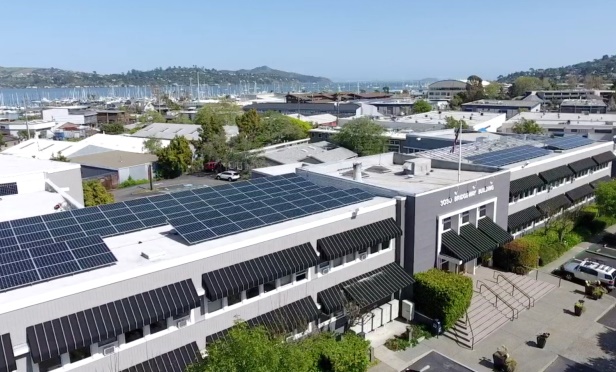© Touchpoint Markets, All Rights Reserved. Request academic re-use from www.copyright.com. All other uses, submit a request to [email protected]. For more inforrmation visit Asset & Logo Licensing.
C-PACE Financings Solarize Two Buildings
Seagate Properties used 30-year C-PACE financing by Cleanfund to install a 49.6 kW solar PV array on Seagate's San Rafael headquarters and in an office building in Sausalito using a 76 kW solar PV array.
Trending Stories
Events
- Real EstateGlobeSt. ELITE Women of Influence (WOI) 2025July 21, 2025 - DenverGlobeSt. Women of Influence Conference celebrates the women who drive the commercial real estate industry forward.More Information
- Real EstateGlobeSt. Multifamily Fall 2025October 15, 2025 - Los AngelesJoin the industry's top owners, investors, developers, brokers & financiers at THE MULTIFAMILY EVENT OF THE YEAR!More Information
Recommended Stories
Multifamily Faces Steepest Price Drop Since 2008
By Erik Sherman | July 02, 2025
Uncertainty grows as prices and sales volumes retreat.
Overlooked Markets Offer Strong Returns for Diligent Investors
By Kristen Smithberg | July 02, 2025
Metro-level nuances reveal opportunities that might not be obvious based on national trends.
California Eases Environmental Rules in Bold Move to Tackle Housing Crisis
By Erik Sherman | July 02, 2025
Bipartisan support drives major overhaul of the state’s development regulations.
Resource Center

Report
Sponsored by TheGuarantors
2025 State of Renter Delinquency and Default
Renter default is a critical challenge. This report, based on a survey of 400+ multifamily professionals, reveals key trends, economic drivers, and mitigation gaps to help you build resilience in 2025. You'll gain insights into the root causes of renter default, the operational strains it can put on your portfolio, and strategies you can leverage to protect your investments and maintain stability.

Assessment
Sponsored by Building Engines
CRE Property Management Assessment: Your Building Operations Scorecard
How do your building operations measure up? Use this detailed scorecard to evaluate your operational approach across five key areas.

White Paper
Sponsored by TheGuarantors
5 Strategic Moves to Protect Your Multifamily NOI in 2025's Squeeze
Skyrocketing economic uncertainty means it’s essential for multifamily owners and operators to strengthen risk mitigation capabilities. Discover expert insights from industry experts, including the President of NMHC, to tackle 2025 challenges such as slower lease-ups, cost pressures, renter fraud, high reliance on concessions, and more.





